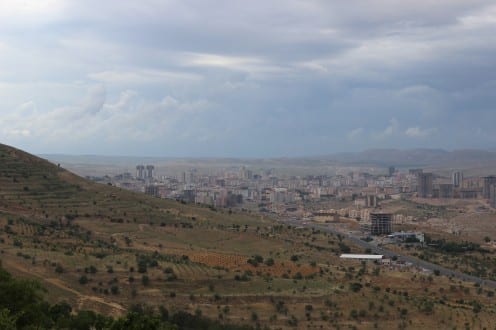Anthropology of social media within the city and the Gezi Park protests
By Elisabetta Costa, on 16 June 2013

Photo: Elisabetta Costa
Our seven ethnographies on the impact of social media are all going to be carried out in seven different towns, in seven different countries. These have different sizes and characteristics, but as written in the research proposal they are all towns with links with bigger and cosmopolitan cities, and at the same time with surrounding rural villages and areas. Furthermore, in order to have more comparable data we decided to carry on the core of our analysis in an area of the town around 25000 inhabitants.
What I would like to stress more in this blog post is the internal cultural heterogeneity that I am coming across in my field-site. In the first two months spent in the field what has drawn my attention more has been the heterogeneity of the people living here. I am trying to meet new people every week and I am finding out that the distinctiveness of their cultural traits is quite relevant. Differences in religion, politics, social class, level of education, gender, ethnicity and age contribute to the shaping of different internet related social and cultural practices. My field-site is also inhabited by teachers, civil servants, university students, engineers, architects, NGO workers, medical doctors, nurses, polices men that came to work here from other parts of West and East Turkey. These persons actively contribute to the life of the city and to the shaping of different processes of social and cultural change. At this point of the research heterogeneity in the cultural traits of this small city’s inhabitants is definitely more visible than any sort of imaginable homogeneity. And what is even more interesting is that different forms of appropriation of the internet and social media seem to be perpetuating cultural differences instead of reducing them. It seems that any generalization about the appropriation of the internet in this small city can be built up only on the assumptions of great diversity. Following the anthropological methodology we know that through the comparisons of these different internet-related habits we will find out why and how dissimilarities emerge. But how can we compare these diversified and heterogeneous practices?
When I started to consider the different locals’ reactions to the Gezi Park protests that have been going on in the last two weeks in many cities of Turkey, my first feeling was to think in terms of the different national and transnational networks my informants were part of. However I believe that categories of networks used to describe communication processes and internet usage brings scholars – and journalists – to think more and more in terms of connection and to not see the rest. As Marilyn Strathern (2002) pointed out “Its epistemological effect (making connections) makes thinkers lazy.” She also reminds us that the more we talk about connection the more divisions become visible. For this reason I believe that a comparison between different practices emerging in the field should be linked first of all to the work of political ideologies at a “micro-level” and only secondly to networks. Ideology and the articulation of hegemonic (and counter-hegemonic) positions within the nation are important. I believe that it is through the intersection between these two different perspectives (network/ ideologies and hegemony) that we can understand more in depth why, and how, distinct and contradictory internet-related practices emerge.
References:
Strathern Marilyn. 2002. “Not giving the game away” In: Gingrich A. and Richard F. (eds.) Anthropology by comparison. London: Routledge
 Close
Close




